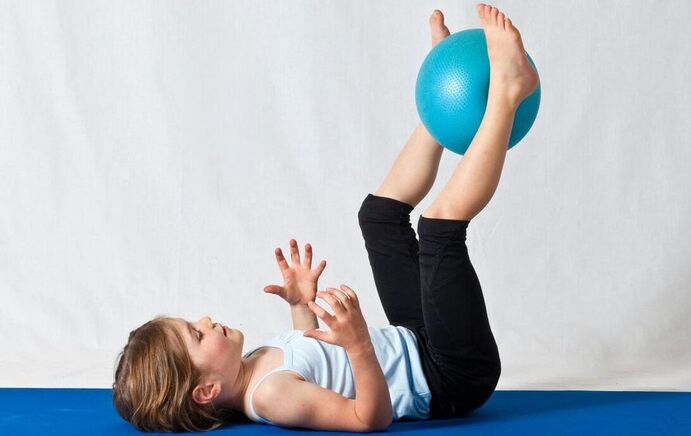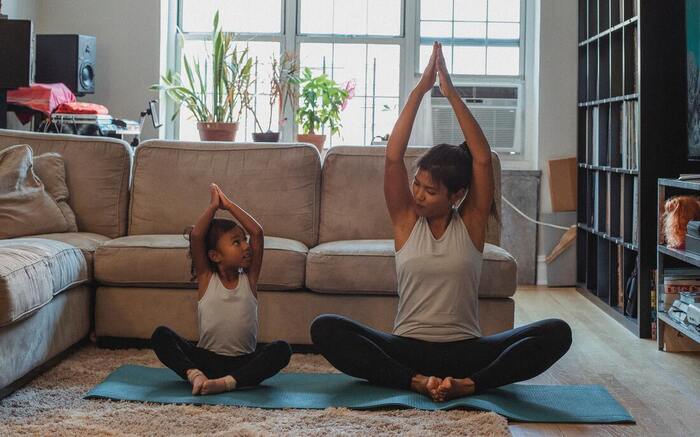Benefits of Yoga for Youth with Depression and Anxiety
Yoga is an ancient Hindu practice of physical postures, breath control, and meditation, often associated with gurus and trendy Californians. Although this practice has been introduced to the western world of adults with an emphasis on physical health and flexibility, yoga also has the potential to promote mental well-being in youths. The Centers for Disease Control and Prevention (CDC) reports that about one in every four to five adolescents has a mental disorder with severe impairment during their lifetime. With depression and anxiety in children and adolescents becoming an increasing public health concern, this exercise may come as a source of hope to many.
Although yoga is not a cure, a 2020 review of 27 studies assessing changes in anxiety and/or depression symptoms in youths after yoga interventions highlighted the potential benefits for youths. The review looked at studies that implemented yogic posture practices on subjects younger than 18 years old and measured levels of anxiety and/or depression using self-reported scales such as the State Trait-Anxiety Inventory (STAI) and the Beck Depression Inventory for Youth (BDI-Y). This review found that after some form of yoga intervention, 70% of the studies showed improvements in symptoms of anxiety and/or depression. For studies assessing both anxiety and depression, 58% showed decreases in both symptoms, while 25% showed decreases in anxiety only. Additionally, 70% of studies assessing only anxiety showed improvements, and 40% of studies assessing depression alone showed improvements. These statistically significant improvements in mental well-being speak to the benefits of the practice.
Although yoga is not a cure, a 2020 review of 27 studies assessing changes in anxiety and/or depression symptoms in youths after yoga interventions highlighted the potential benefits for youths. The review looked at studies that implemented yogic posture practices on subjects younger than 18 years old and measured levels of anxiety and/or depression using self-reported scales such as the State Trait-Anxiety Inventory (STAI) and the Beck Depression Inventory for Youth (BDI-Y). This review found that after some form of yoga intervention, 70% of the studies showed improvements in symptoms of anxiety and/or depression. For studies assessing both anxiety and depression, 58% showed decreases in both symptoms, while 25% showed decreases in anxiety only. Additionally, 70% of studies assessing only anxiety showed improvements, and 40% of studies assessing depression alone showed improvements. These statistically significant improvements in mental well-being speak to the benefits of the practice.
Image Source: Kamaji Ogino
The purpose of yoga is to promote well-being through the integration of mind and body. Using specific movements, focusing on the breath, and being aware of the present moment, yogis can reap the benefits of this ancient practice. Youth who are experiencing mental health disorders such as anxiety and depression as well as most other people can possibly find great relief in it.
Implementation of yoga into one’s routine can have benefits beyond the aforementioned. These include improved digestion, reduced blood pressure, and better posture, strength, and flexibility among other advantages. But how to begin? Yoga is an easy exercise to start because it does not require anything beyond minimal space. There are many instructional websites, videos, and applications online that are devoted to teaching yoga to beginners and specifically to younger participants. All that is needed is to focus on one’s body and mind to have a successful practice.
With the benefits that it brings for both youths afflicted by mental health problems and the general public, yoga is a form of exercise that appeals to a broad range of people. Just a little space, time, and effort are all that are necessary for yoga to become a staple in any routine and potentially bring mental well-being with it.
Implementation of yoga into one’s routine can have benefits beyond the aforementioned. These include improved digestion, reduced blood pressure, and better posture, strength, and flexibility among other advantages. But how to begin? Yoga is an easy exercise to start because it does not require anything beyond minimal space. There are many instructional websites, videos, and applications online that are devoted to teaching yoga to beginners and specifically to younger participants. All that is needed is to focus on one’s body and mind to have a successful practice.
With the benefits that it brings for both youths afflicted by mental health problems and the general public, yoga is a form of exercise that appeals to a broad range of people. Just a little space, time, and effort are all that are necessary for yoga to become a staple in any routine and potentially bring mental well-being with it.
Image Source: Lena Helfinger
RELATED ARTICLES
|
Vertical Divider
|
Vertical Divider
|
Vertical Divider
|






